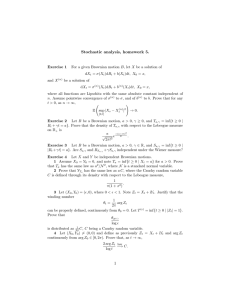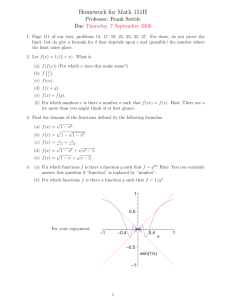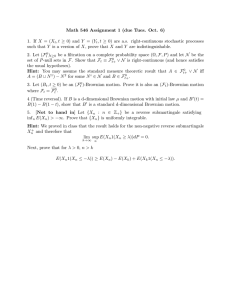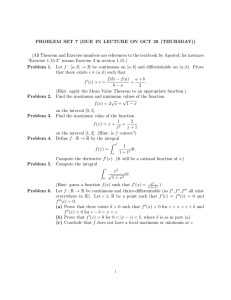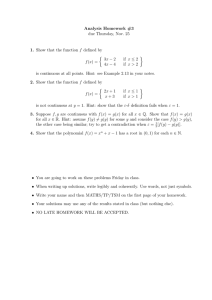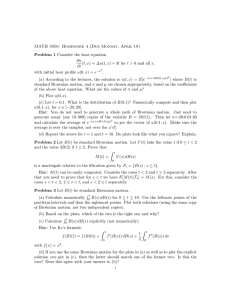Math 546 Assignment 6 (due Dec. 10 in my mailbox)
advertisement
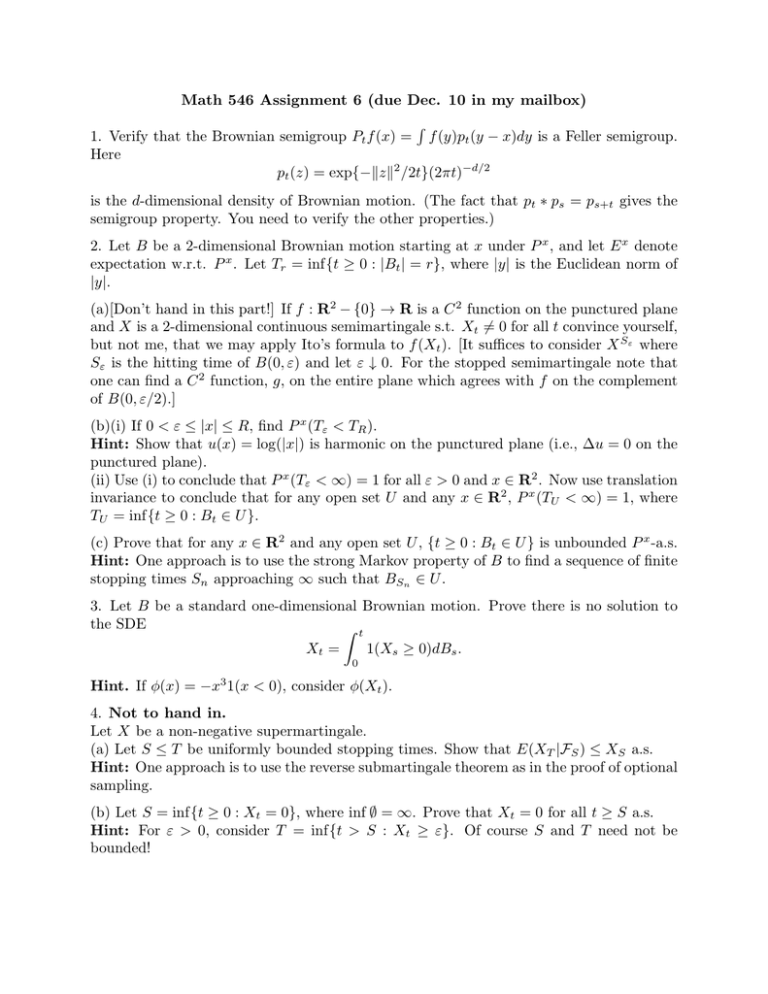
Math 546 Assignment 6 (due Dec. 10 in my mailbox)
R
1. Verify that the Brownian semigroup Pt f (x) = f (y)pt (y − x)dy is a Feller semigroup.
Here
pt (z) = exp{−kzk2 /2t}(2πt)−d/2
is the d-dimensional density of Brownian motion. (The fact that pt ∗ ps = ps+t gives the
semigroup property. You need to verify the other properties.)
2. Let B be a 2-dimensional Brownian motion starting at x under P x , and let E x denote
expectation w.r.t. P x . Let Tr = inf{t ≥ 0 : |Bt | = r}, where |y| is the Euclidean norm of
|y|.
(a)[Don’t hand in this part!] If f : R2 − {0} → R is a C 2 function on the punctured plane
and X is a 2-dimensional continuous semimartingale s.t. Xt 6= 0 for all t convince yourself,
but not me, that we may apply Ito’s formula to f (Xt ). [It suffices to consider X Sε where
Sε is the hitting time of B(0, ε) and let ε ↓ 0. For the stopped semimartingale note that
one can find a C 2 function, g, on the entire plane which agrees with f on the complement
of B(0, ε/2).]
(b)(i) If 0 < ε ≤ |x| ≤ R, find P x (Tε < TR ).
Hint: Show that u(x) = log(|x|) is harmonic on the punctured plane (i.e., ∆u = 0 on the
punctured plane).
(ii) Use (i) to conclude that P x (Tε < ∞) = 1 for all ε > 0 and x ∈ R2 . Now use translation
invariance to conclude that for any open set U and any x ∈ R2 , P x (TU < ∞) = 1, where
TU = inf{t ≥ 0 : Bt ∈ U }.
(c) Prove that for any x ∈ R2 and any open set U , {t ≥ 0 : Bt ∈ U } is unbounded P x -a.s.
Hint: One approach is to use the strong Markov property of B to find a sequence of finite
stopping times Sn approaching ∞ such that BSn ∈ U .
3. Let B be a standard one-dimensional Brownian motion. Prove there is no solution to
the SDE
Z t
Xt =
1(Xs ≥ 0)dBs .
0
Hint. If φ(x) = −x3 1(x < 0), consider φ(Xt ).
4. Not to hand in.
Let X be a non-negative supermartingale.
(a) Let S ≤ T be uniformly bounded stopping times. Show that E(XT |FS ) ≤ XS a.s.
Hint: One approach is to use the reverse submartingale theorem as in the proof of optional
sampling.
(b) Let S = inf{t ≥ 0 : Xt = 0}, where inf ∅ = ∞. Prove that Xt = 0 for all t ≥ S a.s.
Hint: For ε > 0, consider T = inf{t > S : Xt ≥ ε}. Of course S and T need not be
bounded!
